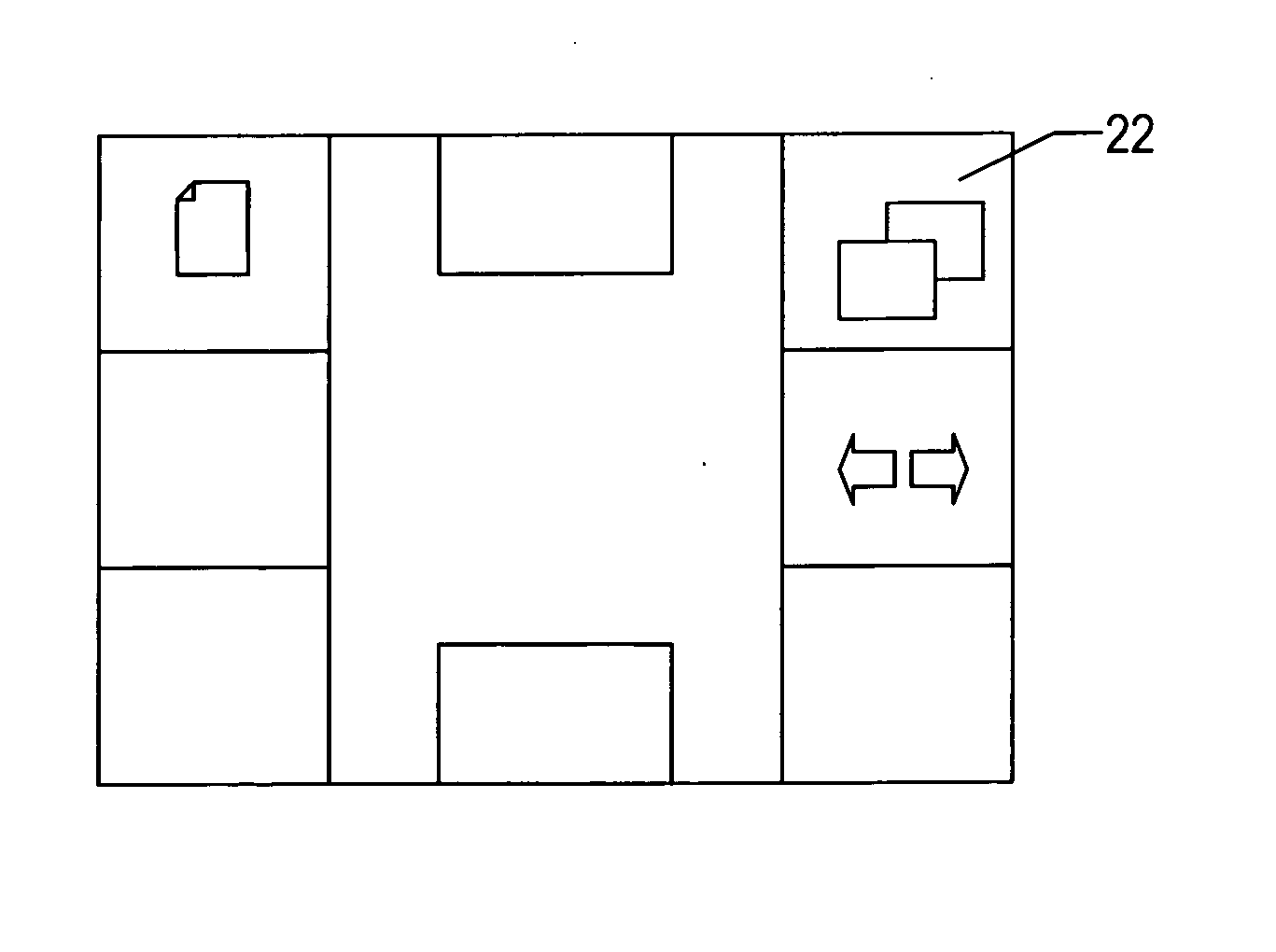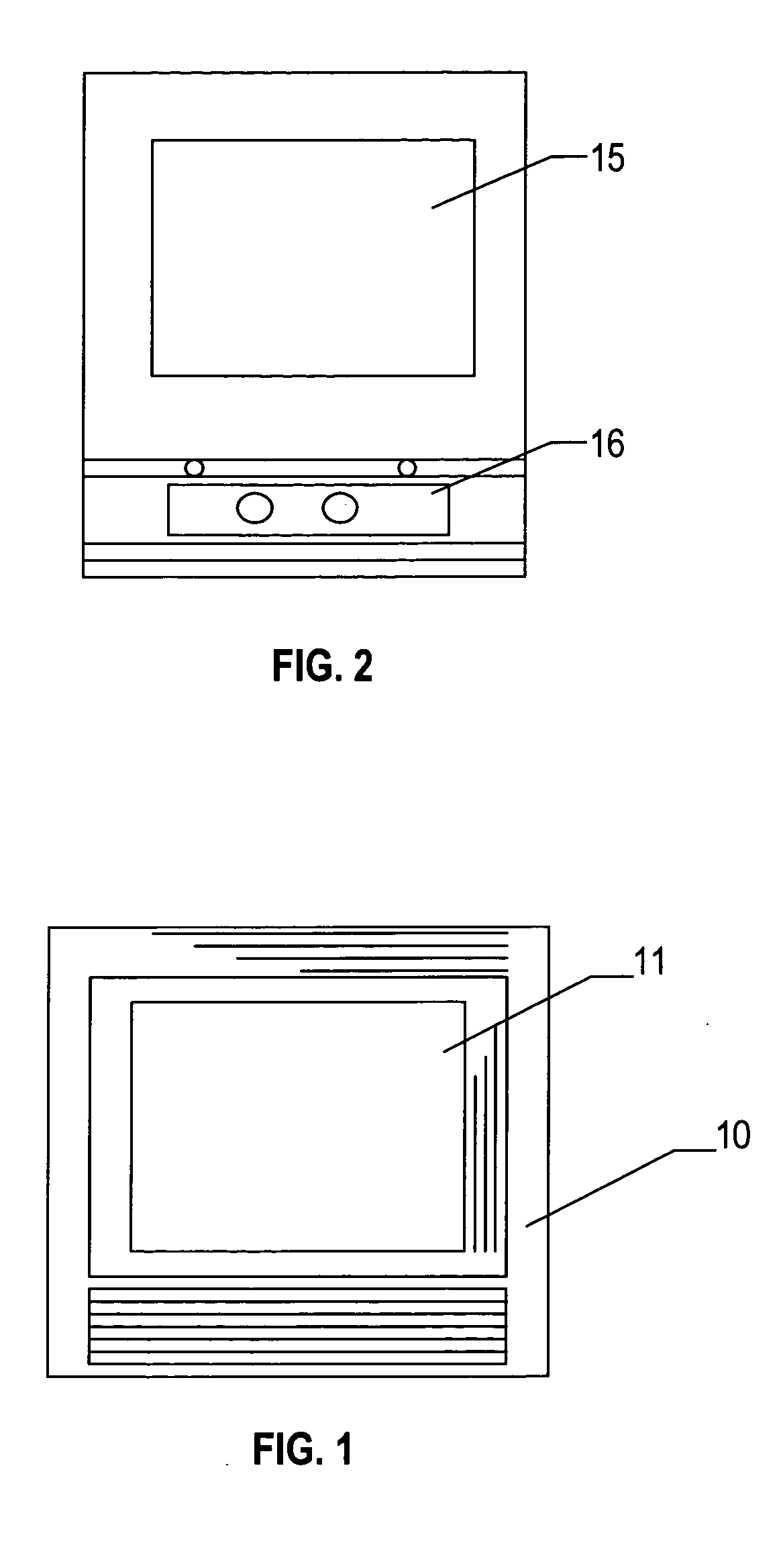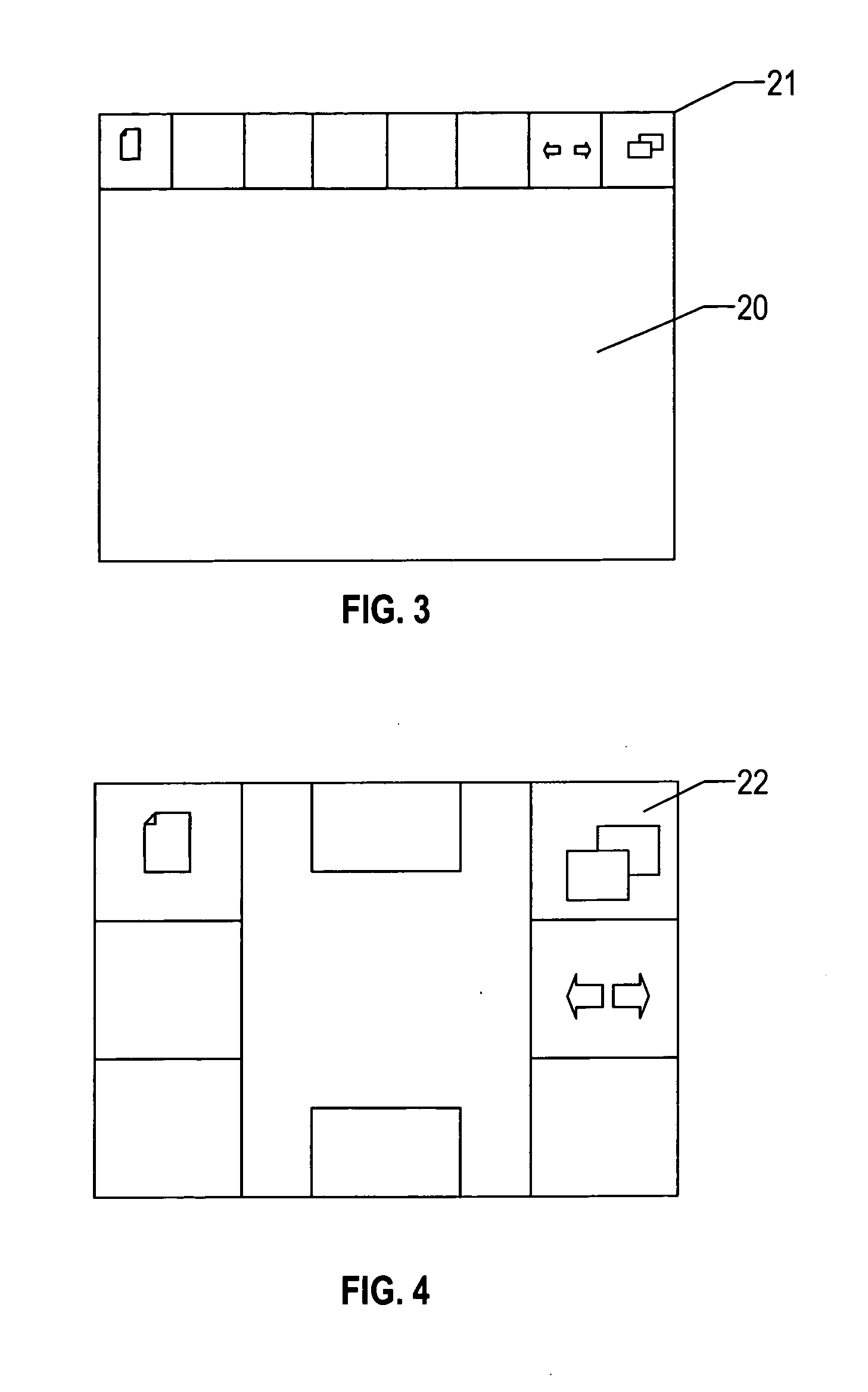Semi-transparency in size-constrained user interface
a user interface and size limitation technology, applied in the field of displaying information on the screen, can solve the problems of complex commands that can be entered without numerous errors, need of a stable location, and the inability to efficiently operate the system, so as to increase the screen space of the computing device, increase the functional area of the screen, and achieve large functional targets
- Summary
- Abstract
- Description
- Claims
- Application Information
AI Technical Summary
Benefits of technology
Problems solved by technology
Method used
Image
Examples
Embodiment Construction
[0030] The present invention describes method for displaying control menus on a screen in a transparent manner. This method enable the user of a computing device to activate functions corresponding to the menu items, by touching the menu icon that is displayed in a transparent manner on the screen. The ability to display these items on the screen will allow for a larger screen area on the device and will reduce the need for dedicated space on the device for control buttons.
[0031] The primary application for the method of the present invention is hand-held computing devices. These devices are smaller in size than a conventional computer or a portable laptop computer. In addition, devices that employ touch-screen control procedures are a primary application of the invention.
[0032]FIG. 1 illustrates a conventional computing-notepad device. These devices comprise a housing 10 and a screen 11. The processing and storing functions are internal and not shown in this figure. Commands for ...
PUM
 Login to View More
Login to View More Abstract
Description
Claims
Application Information
 Login to View More
Login to View More - R&D
- Intellectual Property
- Life Sciences
- Materials
- Tech Scout
- Unparalleled Data Quality
- Higher Quality Content
- 60% Fewer Hallucinations
Browse by: Latest US Patents, China's latest patents, Technical Efficacy Thesaurus, Application Domain, Technology Topic, Popular Technical Reports.
© 2025 PatSnap. All rights reserved.Legal|Privacy policy|Modern Slavery Act Transparency Statement|Sitemap|About US| Contact US: help@patsnap.com



